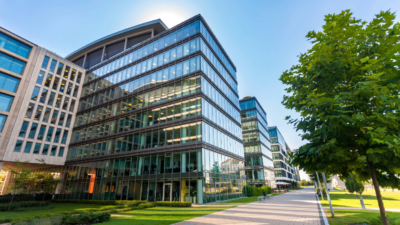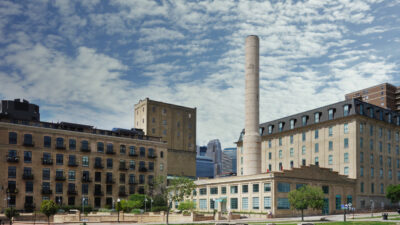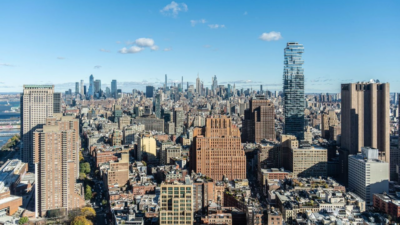What do millennials and suburban office buildings have in common? Many of them were born in the 1980s. While the 2 billion millennials globally are entering their prime working years and growing in influence, the office buildings of this era are increasingly growing out of date and in desperate need of facelifts.
Like many other products of the ‘80s (think VHS tapes and Polaroid cameras), these buildings are simply no longer as desirable as they once were. The only problem is that it’s much cheaper to buy a new set of DVDs or a new digital camera than it is to renovate a 30-year-old office building.
Even so, if you’re an owner of an aging office building, it’s probably time to start thinking about how you can help your building compete in an increasingly competitive environment. Here are three steps to consider taking.
1. CREATE A “WOW”-WORTHY ENTRY EXPERIENCE
First impressions are everything. It’s the point in time when a prospective tenant will decide whether they want to move their business into your building. It’s also the point in time when prospective new employees will decide if they want to work in your building.
Marlyn Zucosky of the design firm Ware Malcomb agrees: “When designing a building lobby, it’s critical to create a space that is open and well-lit, with easy to understand way-finding. We look to include a unique feature that has a ‘wow’ factor, such as artwork, sculpture, an interesting accent wall or light fixture. We also specify finishes that are both timeless and easy to maintain to keep the design from becoming dated.”
2. BOLSTER YOUR MENU OF AMENITIES
If you don’t already know, the millennial population has taken over the workforce to the point that businesses and buildings alike need to take the “adapt or die” approach. Millennials desire features in their places of work such as fitness centers, cafeterias, high-speed internet and even garden areas in some cases.
Although it’s not a cheap endeavor to incorporate these kind of amenities, it will surely pay off in the long run as tenants have come to expect these features in their buildings. Without such amenities, your chance of attracting new tenants and retaining existing tenants will decrease.
3. ENSURE SYSTEMS AND STRUCTURES ARE UP TO SCRATCH
Here are the two most common tenant complaints: It’s too hot and it’s too cold. The average age of an office building HVAC system is 15 years. And even if you have a new state-of-the-art HVAC system in place, it’s hard to make everyone comfortable. Here’s one thing we do know: a new HVAC system will help cure some of the temperature blues. An older system that needs to be replaced will surely disrupt your tenants’ work.
According to BOMA, the average life of a commercial roof is just under 20 years. Since the average age of most suburban office buildings is 30 years, it means that your roof is either in desperate need of replacement or will need another new roof in the next decade. Although a few stained ceiling tiles or minor leaks might not ruin a tenant’s business, it’s sure to creep into their game plan when deciding whether or not to renew their lease or move.
THE TIME IS NOW
If you own an aging office building and you aren’t planning for a capital improvement campaign, there is no time like the present. If you need a proof of concept, take Mack-Cali, a REIT from New Jersey that owns millions of square feet of commercial real estate. They have a $100 million capital improvement program in the pipeline to renovate many of their older assets.
Or consider Boston Properties’ recent renovation of 101 Carnegie Center in Princeton, NJ. For several years, Boston Properties had held a vacant 132,659-square-foot building that hadn’t been renovated in decades. Since transforming this building into a modern marvel, they’ve been able to lease 100% of the building. The improvements include a completely renovated lobby with high-end finishes, a brand new cafeteria, a fitness center equipped with classes and personal trainers and a state-of-the-art meeting space. Without these renovations, Boston Properties would likely still be sitting on a large block of empty space.
If you’re an owner, it’s essential to ensure your building is up to date and ready to lease so you can position your building to win more business. And if you’re a tenant, be sure your broker does their due diligence to ensure your existing or new building has recently undergone improvements or has plans to do so in the near term.

 Colliers Insights Team
Colliers Insights Team
 Marc Shandler
Marc Shandler Josh Cramer
Josh Cramer
 Jesse Tollison
Jesse Tollison
 Katie Watts
Katie Watts